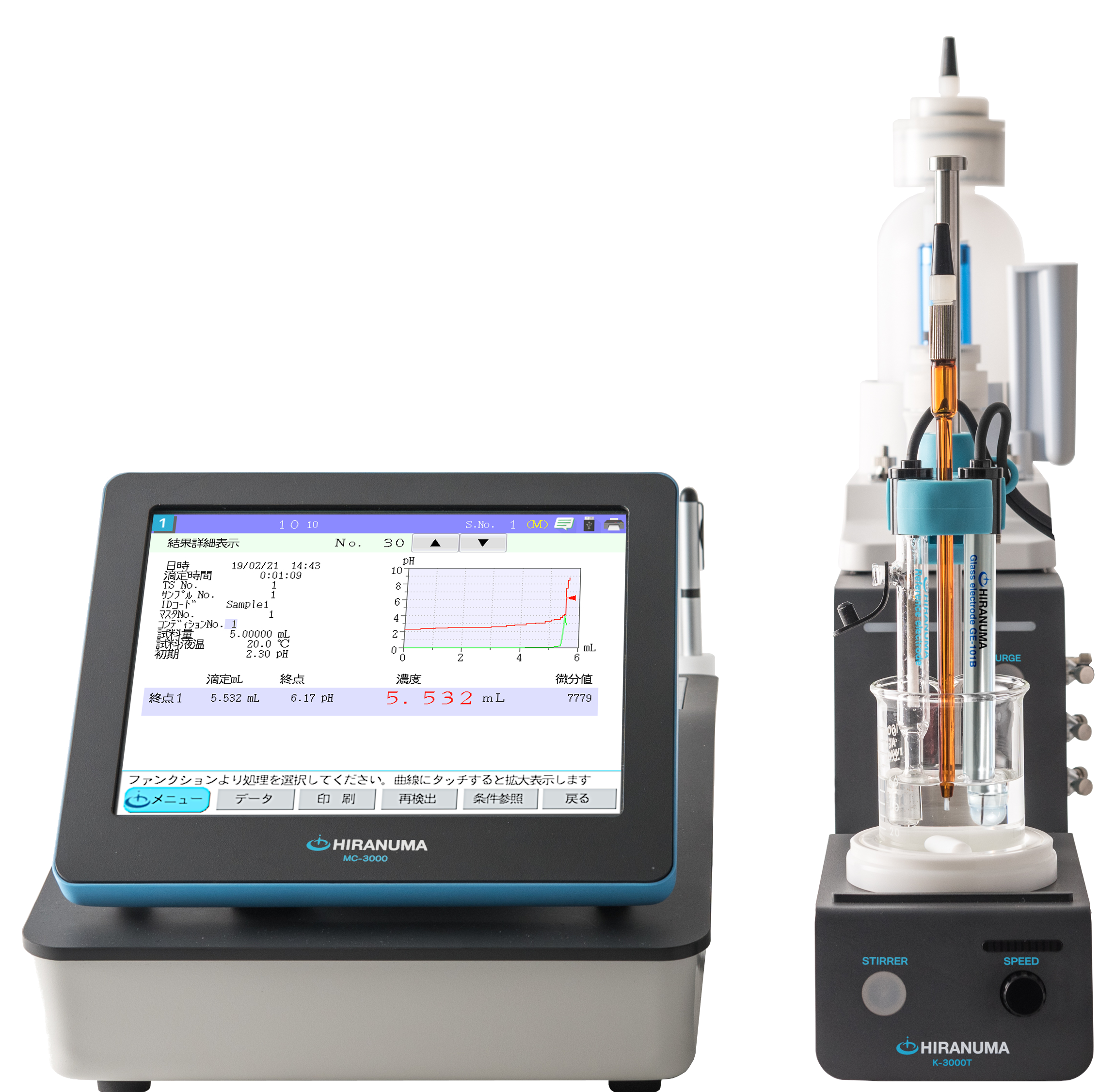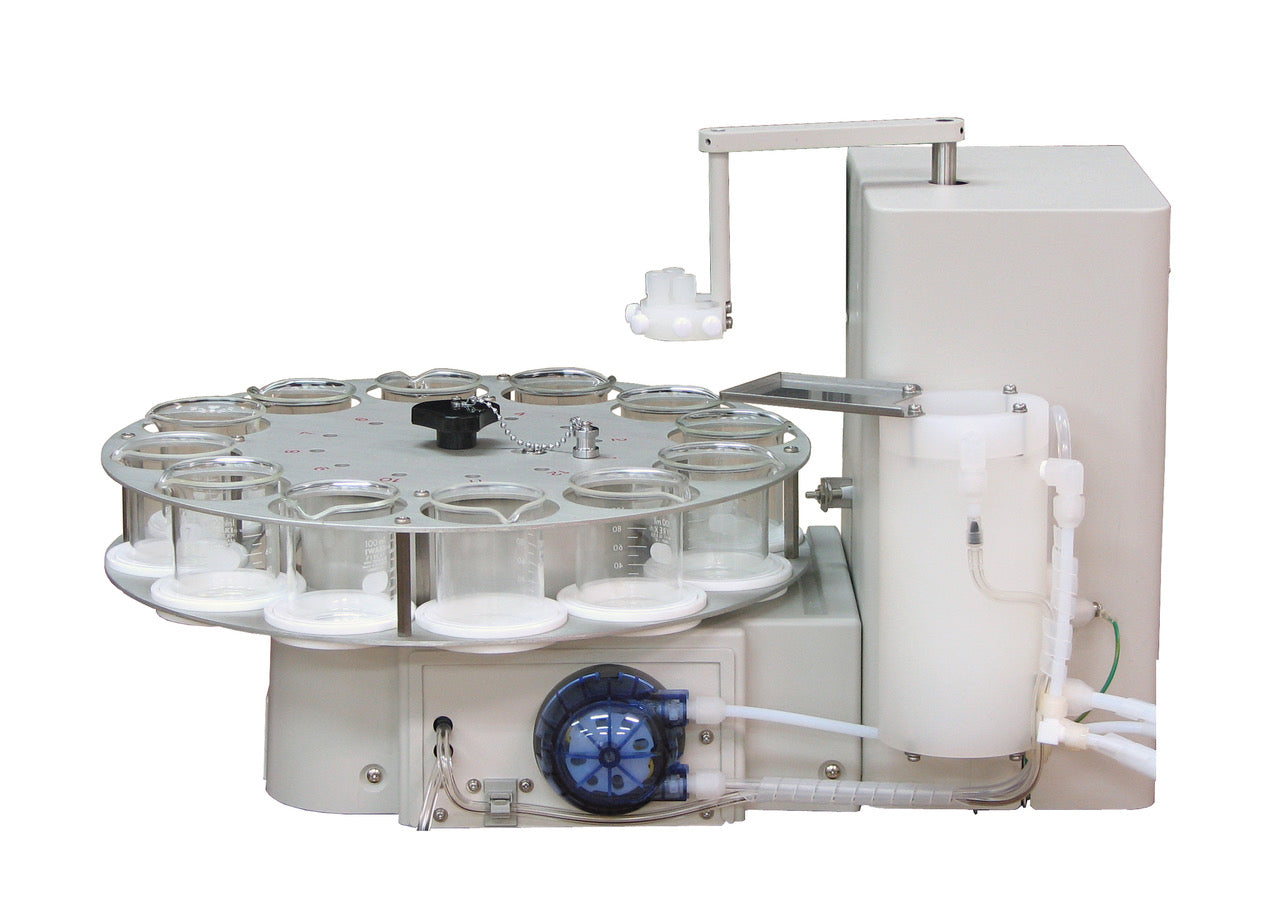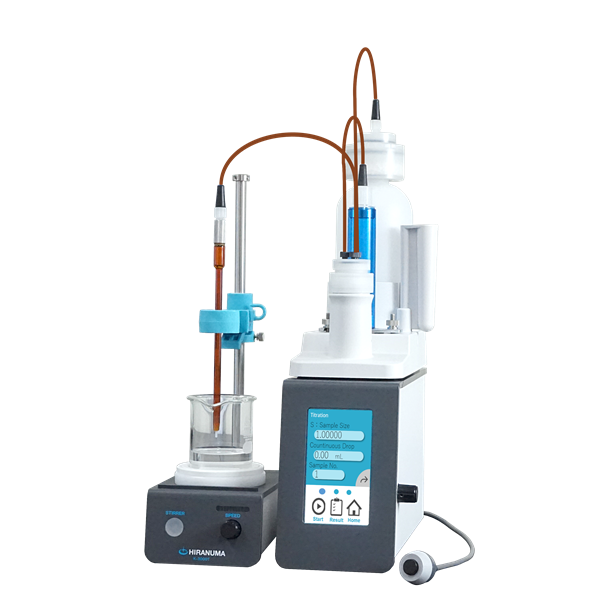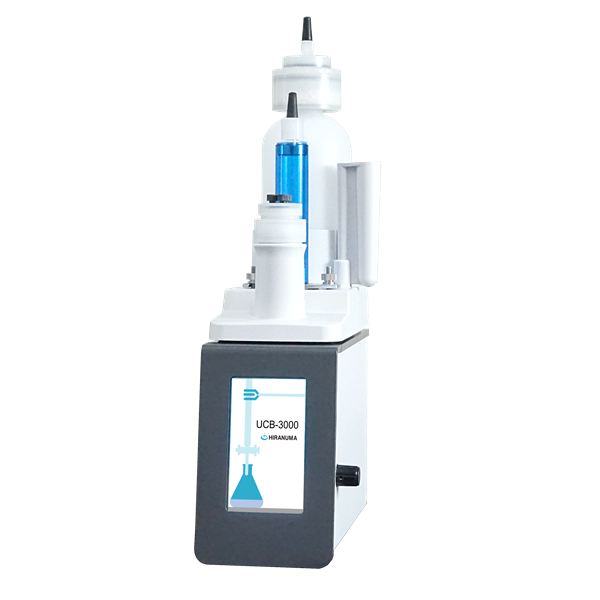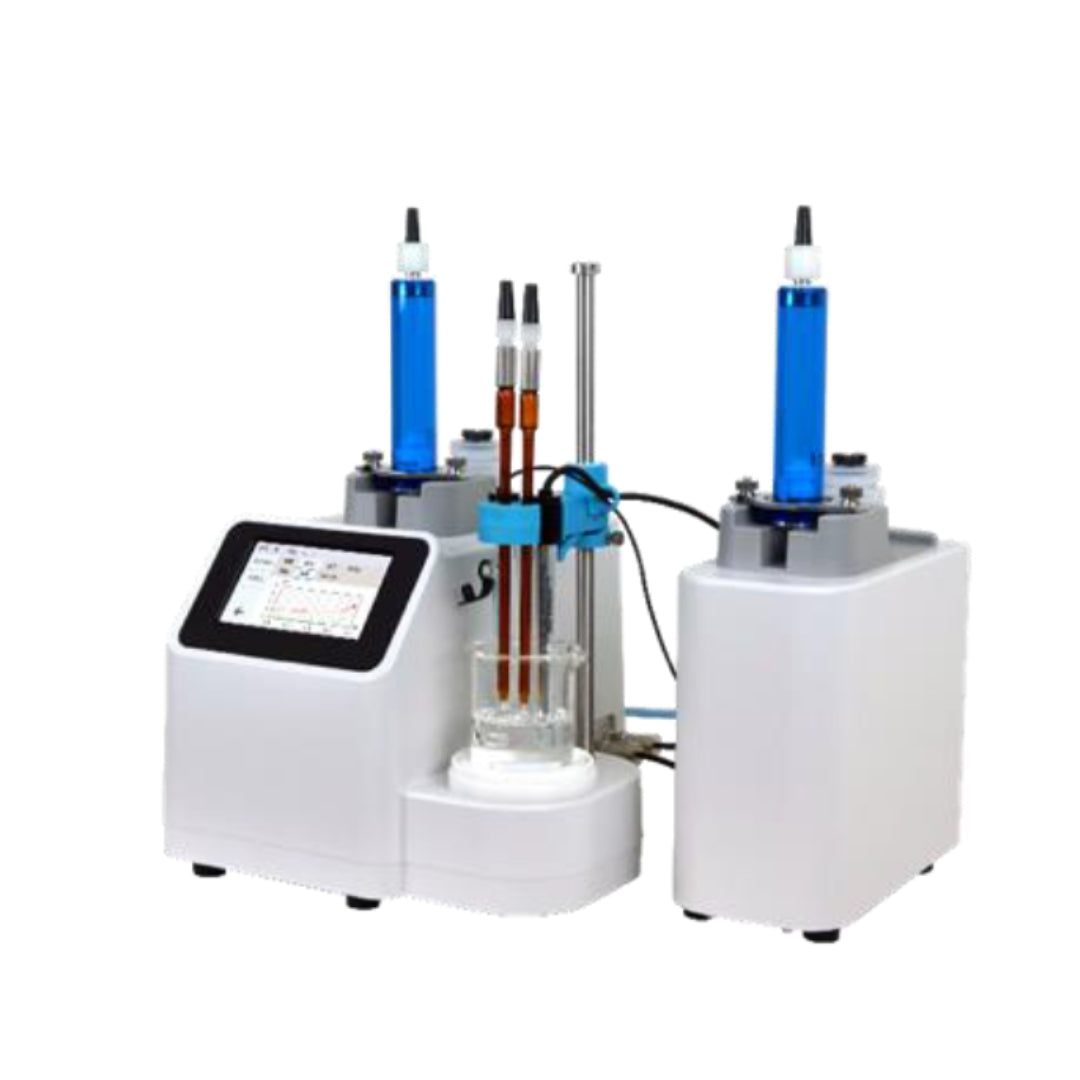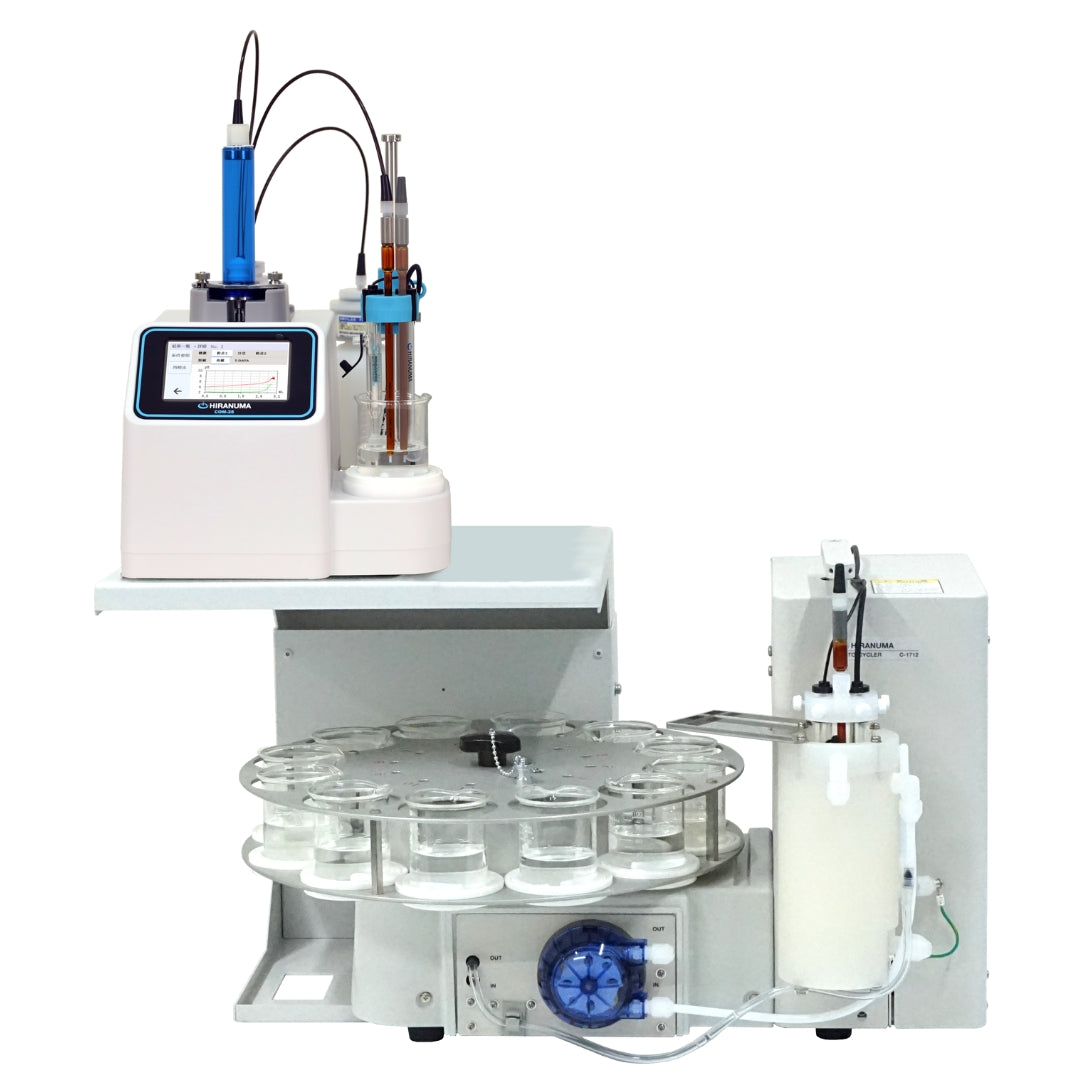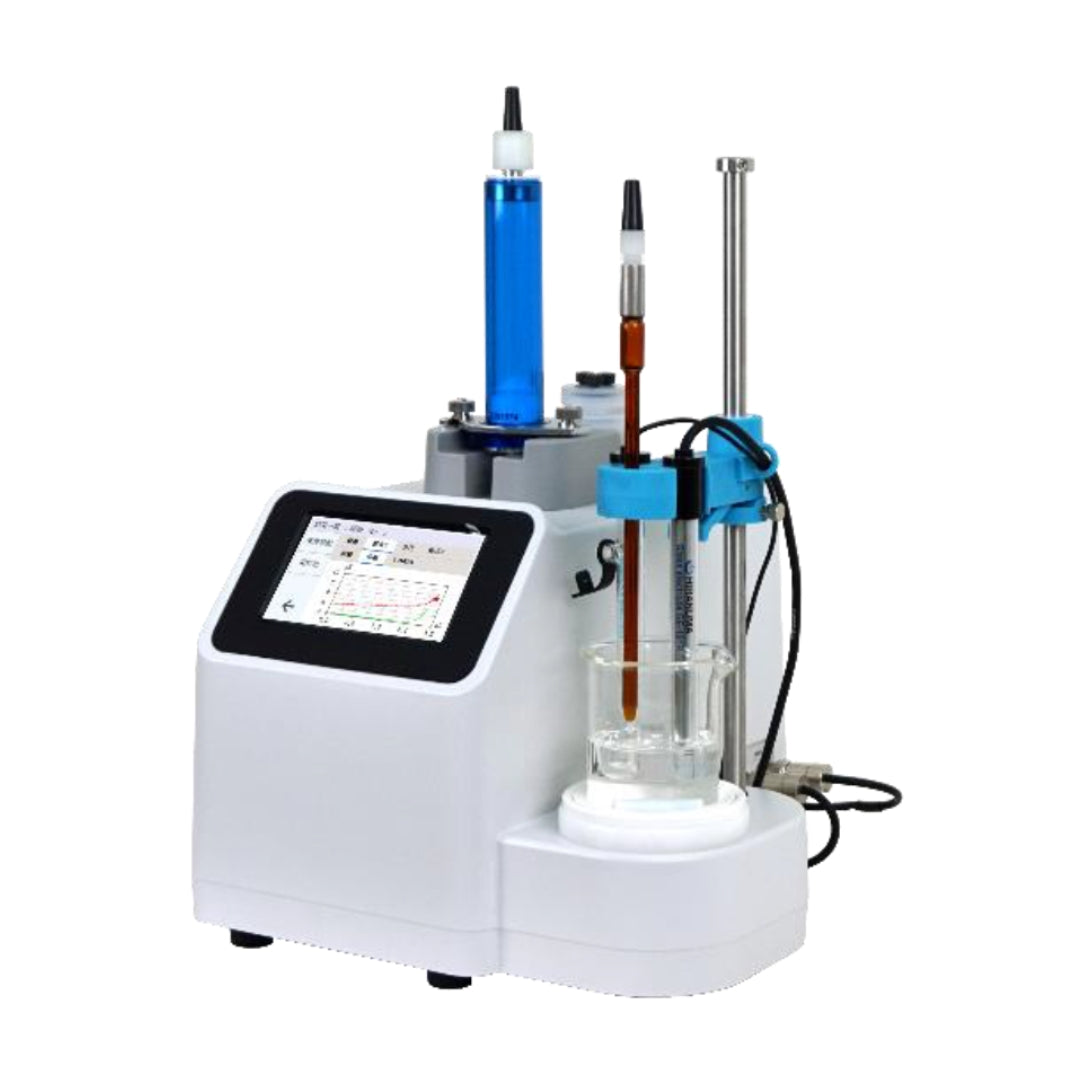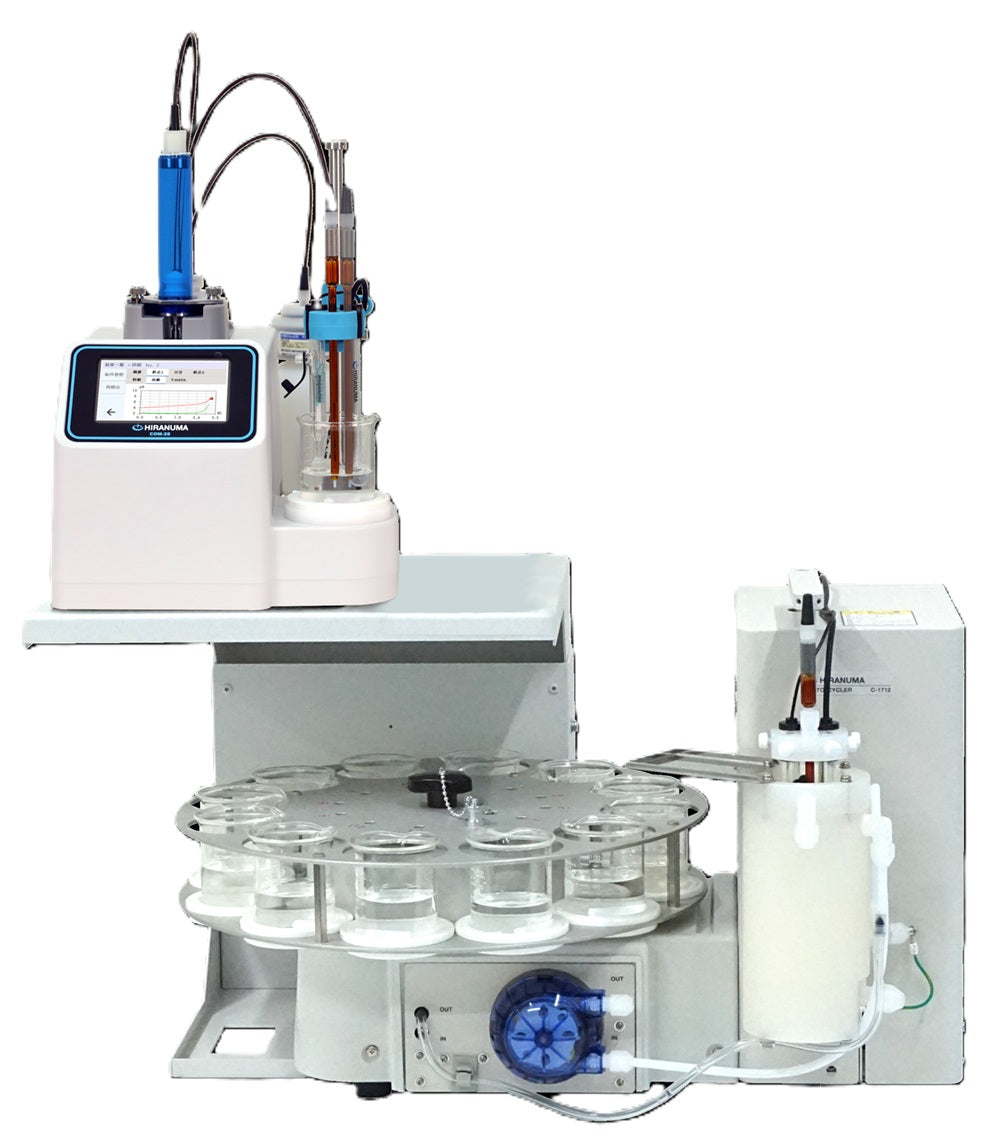| HIRANUMA APPLICATION DATA | Automatic Titrator | Data No. | K7 | Feb. 10,2021 |
| Organic acid | Fractional determination of acetic acid and ammonium acetate |
1. Abstract
The mixed solution of acetic acid and ammonium acetate is used as washing solution on the production process of semiconductor. There are some determination methods for the fractional determination of a weak acid and a salt of a weak acid. The formaldehyde addition method which is the most typical determination method is introduced in this report.
First, the neutralization titration is performed for acetic acid with sodium hydroxide (formula (1)). After that, acetic acid and hexamethylenetetramine equivalent to ammonium acetate are generated by adding formaldehyde (formula (2)). Finally, the generated acetic acid is continuously titrated with sodium hydroxide to determine the ammonium acetate.
| CH₃COOH + NaOH → CH₃COONa + H₂O | ・・・(1) |
| 4CH₃COONH₄ + 6HCHO → 4CH₃COOH + C₆H₁₂N₄ + 6H₂O | ・・・(2) |
| Hexamethylenetetramine |
2. Configuration of instruments and Reagents
| (1) | Configuration | ||
| Main unit | : | Automatic Titrator COM series | |
| Option | : | One buret | |
| Electrode | : | Glass electrode GE-101B Reference electrode RE-201Z *Instead of above electrodes, the following combination electrodes are usable. ・GR-501BZ (Fixed sleeve type) ・GR-511BZ (Flexible sleeve type) |
|
| (2) | Reagents | ||
| Titrant | : | 0.1 mol/L Sodium hydroxide standard solution | |
| Additive | : | 35 % Formaldehyde | |
3. Measurement procedure
| (1) | Take 1 mL of sample into a 100 mL beaker with a volumetric pipette. |
| (2) | Add about 50 mL of DI water. |
| (3) | Immerse the electrodes to start titration. The titration with 0.1 mol/L sodium hydroxide for acetic acid, dispensing formaldehyde by an optional buret, and the titration with 0.1 mol/L sodium hydroxide for ammonium acetate are sequentially performed. |
4. Measurement conditions and results
Examples of titration conditions
(1) Titration for acetic acid
| Cndt No | 1 | |
| Method | Auto | |
| Buret No. | 1 | |
| Amp No. | 1 | |
| D. Unit | pH | |
| S-Timer | 5 | sec |
| C.P. mL | 0 | mL |
| T Timer | 0 | sec |
| D.P. mL | 0 | mL |
| End Sens | 300 | |
| Over mL | 0 | mL |
| Max Vol. | 20 | mL |
| Constant No. | 1 | |
| Size | 1 | mL |
| Blank | 0 | mL |
| Molarity | 0.1 | mol/L |
| Factor | 1.006 | |
| K | 60.05 | |
| L | 0 | |
| Unit | % | |
| Formula | ||
| (D-B)*K*F*M/(S*10) | ||
| Decimal Places | 3 | |
|
Auto input Param.
|
None | |
| Mode No. | 5 | |
| Pre Int | 0 | sec |
| Del K | 5 | |
| Del Sens | 0 | mV |
| Int Time | 3 | sec |
| Int Sens | 3 | mV |
| Brt Speed | 2 | |
| Pulse | 40 | |
(2) Dispense formaldehyde.
| Cndt No | 2 | |
| Method | Disp | |
| Buret No. | 2 | |
| S-Timer | 0 | sec |
| Disp Vol. | 5 | mL |
(3) Titration for ammonium acetate
| Cndt No | 3 | |
| Method | Auto | |
| Buret No. | 1 | |
| Amp No. | 1 | |
| D. Unit | pH | |
| S-Timer | 15 | sec |
| C.P. mL | 0 | mL |
| T Timer | 0 | sec |
| D.P. mL | 0.3 | mL |
| End Sens | 500 | |
| Over mL | 0.3 | mL |
| Max Vol. | 20 | mL |
| Constant No. | 3 | |
| Size | 1 | mL |
| Blank | 0 | mL |
| Molarity | 0.1 | mol/L |
| Factor | 1.006 | |
| K | 77.08 | |
| L | 0 | |
| Unit | % | |
| Formula | ||
| (D-B)*K*F*M/(S*10) | ||
| Decimal Places | 3 | |
|
Auto input Param.
|
None | |
| Mode No. | 5 | |
| Pre Int | 0 | sec |
| Del K | 5 | |
| Del Sens | 0 | mV |
| Int Time | 3 | sec |
| Int Sens | 3 | mV |
| Brt Speed | 2 | |
| Pulse | 40 | |
Measurement results
Measurement results of acetic acid
| Number of measurement |
Size (mL) |
Titrant volume(mL) |
Acetic acid Concentration(%) |
|---|---|---|---|
| 1 | 1 | 4.928 | 2.977 |
| 2 | 1 | 4.920 | 2.972 |
| 3 | 1 | 4.916 | 2.970 |
| Statistic calculation |
Average | 2.973 % | |
| Standard deviation | 0.0036 % | ||
| Coefficient of variation | 0.121 % | ||
Measurement results of ammonium acetate
| Number of measurement |
Size (mL) |
Titrant volume(mL) |
Ammonium acetate Concentration(%) |
|---|---|---|---|
| 1 | 1 | 8.976 | 6.960 |
| 2 | 1 | 8.965 | 6.952 |
| 3 | 1 | 8.957 | 6.945 |
| Statistic calculation |
Average | 6.952 % | |
| Standard deviation | 0.0075 % | ||
| Coefficient of variation | 0.108 % | ||
Examples of titration curves

5. Note
Another method for successive titration
There is a method without adding formaldehyde for fractional determination other than the method described in this report. The sample is titrated with sodium hydroxide standard solution in this method; the first inflection point indicates the end point for acetic acid, and the second inflection point is obtained as the end point for ammonium acetate. The advantage of this method is that the addition of formaldehyde is not required. On the other hand, the second end point of ammonium acetate sometimes gets unclear inflection point depending on the concentration of the ammonium acetate. The right figure shows an example of titration curve on this method.

Keywords: Acetic acid, Ammonium acetate, Sodium hydroxide, Formaldehyde, Neutralization titration
*Some measurement would not be possible depending on optional configuration of system.


